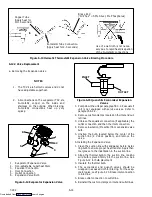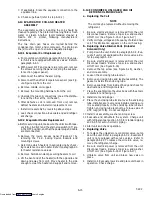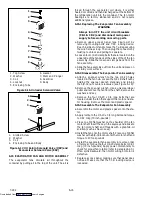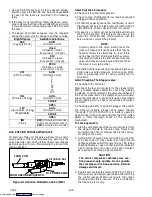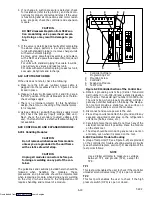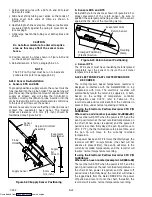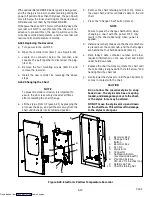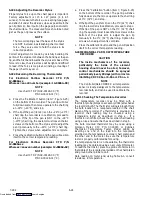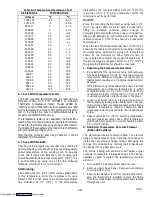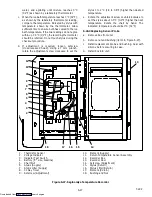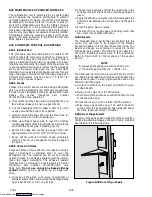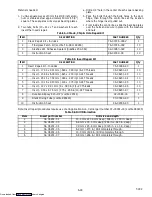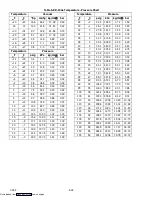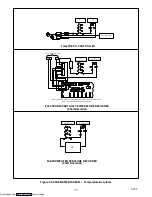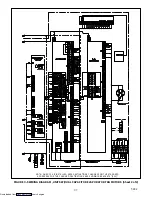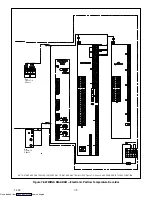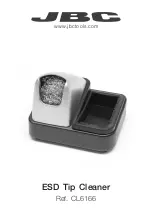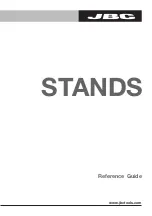
6-28
T-292
6.25 MAINTENANCE OF PAINTED SURFACES
The refrigeration unit is protected by a special paint
system against the corrosive atmosphere in which it
normally operates. However, should the paint system
be damaged, the base metal can corrode. In order to
protect the refrigeration unit from the highly corrosive
sea atmosphere, or if the protective paint system is
scratched or damaged, clean area to bare metal using a
wire brush, emery paper or equivalent cleaning method.
Immediately following cleaning, apply 2--part epoxy
paint to the area. and allow to dry. After the first coat
dries, apply a second coat.
6.26 COMPOSITE CONTROL BOX REPAIRS
6.26.1 Introduction
This procedure provides instructions for repair of the
Carrier Transicold composite control box. Damage to
the control box may be in the form of a chip or hole, a
crack, a damaged thread insert or damage to the door
hinge inserts. Generally, the object of the repair must be
to ensure sufficient strength is restored to the damaged
area and the repair must keep the box water tight.
Information on repair kits and repair procedures for each
type of damage is provided in the following paragraphs.
Ambient temperature must be above 7
°
C (45
°
F) for
proper curing of epoxy repairs.
6.26.2 Cracks
Cracks in the control box are repaired using a fiberglass
patch over the damaged area. Materials required are
included in the Fiberglass Patch Kit supplied with Crack
Repair
Kit,
Carrier
Transicold
part
number
76-00724-00SV (see Table 6-4).
a. The surface must be clean and dry. Roughen the sur-
face with sandpaper to ensure a good bond.
b. Cut the fiberglass cloth to allow a 25mm (1--inch)
overlap around the area to be repaired.
c. Stretch and position the cloth over the area to be re-
paired and secure it with masking tape.
d. Make up sufficient epoxy glue to cover the cloth by
mixing equal parts of resin and hardener. Saturate the
cloth with the epoxy glue, spreading evenly.
e. Remove the tape and overlap the edge of the cloth
approximately 6 to 12 mm (1/4” to 1/2”) with glue.
f. Epoxy will dry in 45--60 minutes. When completely
cured (12 hours), use sandpaper to smooth edges of
the patch.
6.26.3 Chips And Holes
Chips and holes in the control box are repaired using a
piece of aluminum or stainless steel to cover the
damaged area. The material can be cut to suit and
riveted in place. An adhesive sealant must be used to
make the repair watertight. The adhesive sealant
(Sikaflex 221) is included in Crack Repair Kit Carrier
Transicold
part
number
76-00724-00SV
(see
Table 6-4).
Do not use an acetone based silicone
sealant
(Which can be identified by a vinegar--like
odor).
a. To make up the patch, cut a piece of aluminum or
stainless steel so that it will overlap the damaged area
by at least 40 mm (1 1/2”) on all sides.
b. Choose rivet locations and drill the rivet holes in the
corresponding locations on the control box and patch
piece.
c. Apply the adhesive sealant around the damaged area
to form a seal between the control box and the patch
piece.
d. Rivet the patch piece in place.
e. File smooth any rough edges (including rivets) that
may come into contact with wires.
6.26.4 Inserts
The threaded brass inserts that are molded into the
control box will need to be replaced if the threads
become stripped, or if the insert becomes loose. The
inserts and epoxy are contained in repair kit, Carrier
Transicold part number 76-50084-00 (see Table 6-5).
There are 6 different inserts used in the control box.
Refer to Figure 6-29 for the locations of the various
inserts.
NOTE
An epoxy application gun is also needed, Carri-
er Transicold part number 07 -- 00391 -- 00.
The damaged insert must be removed from the control
box. Table 6-6 identifies the drill size and drill depth to be
used for each insert. A stop ring should be used on the
drill bit to limit the depth.
a. Center the drill bit on the insert and drill to the pre-
scribed depth.
b. Remove the chips from the drilled hole.
c. Mix the two component epoxy and fill the hole 1/2 way
to the top with epoxy.
d. Press the insert in until it is flush with the surface.
e. Wipe away any excess epoxy. The part is ready for
service after the bond material has hardened and is
tack free (approximately 20 minutes)
6.26.5 Door Hinge Inserts
If the door hinges have been pulled from the control box
drill and reinstall the hinge as shown in Figure 6-28 and
described in the following steps.
Figure 6-28 Door Hinge Repair
Downloaded from
Summary of Contents for 69NT40-531 Series
Page 2: ...Downloaded from ManualsNet com search engine ...
Page 4: ...Downloaded from ManualsNet com search engine ...
Page 8: ...Downloaded from ManualsNet com search engine ...
Page 16: ...Downloaded from ManualsNet com search engine ...
Page 57: ...Downloaded from ManualsNet com search engine ...
Page 104: ...Downloaded from ManualsNet com search engine ...
Page 106: ...7 2 T 292 Figure 7 2 SCHEMATIC DIAGRAM Downloaded from ManualsNet com search engine ...

